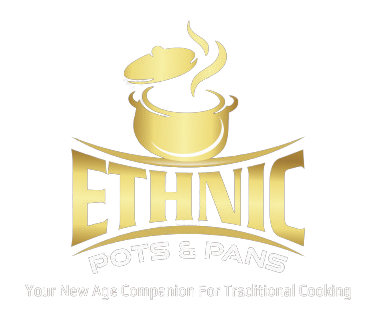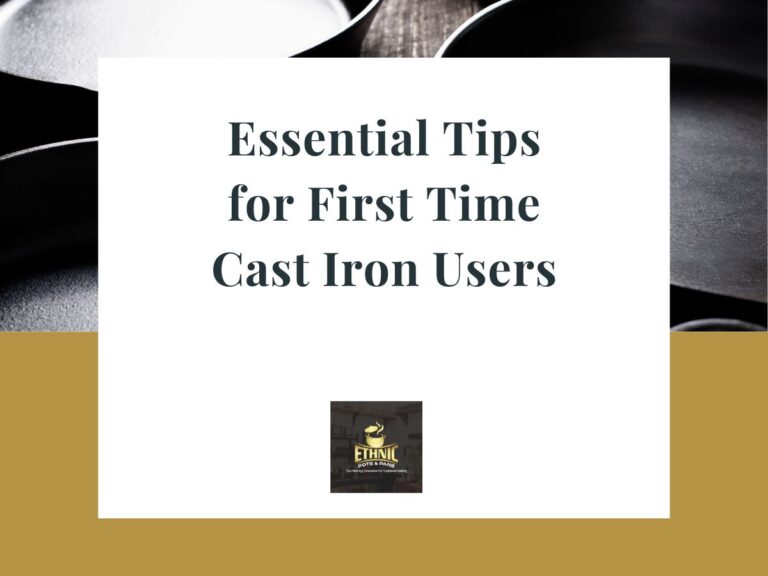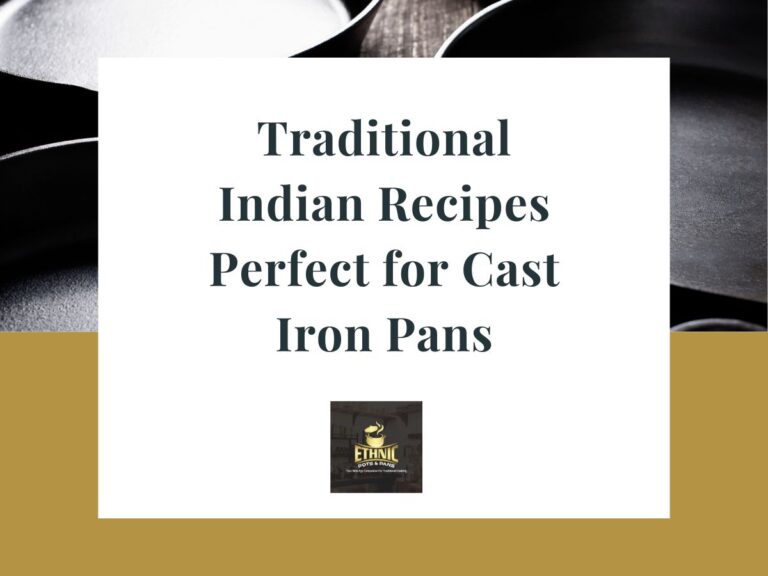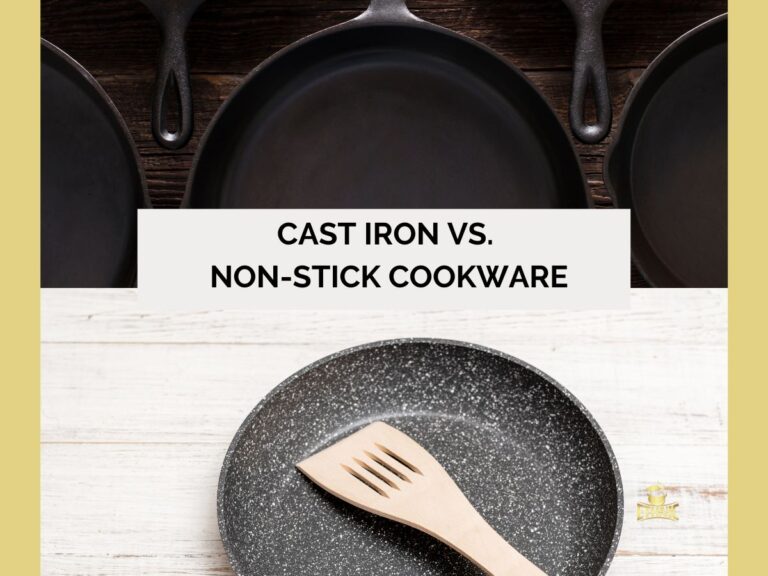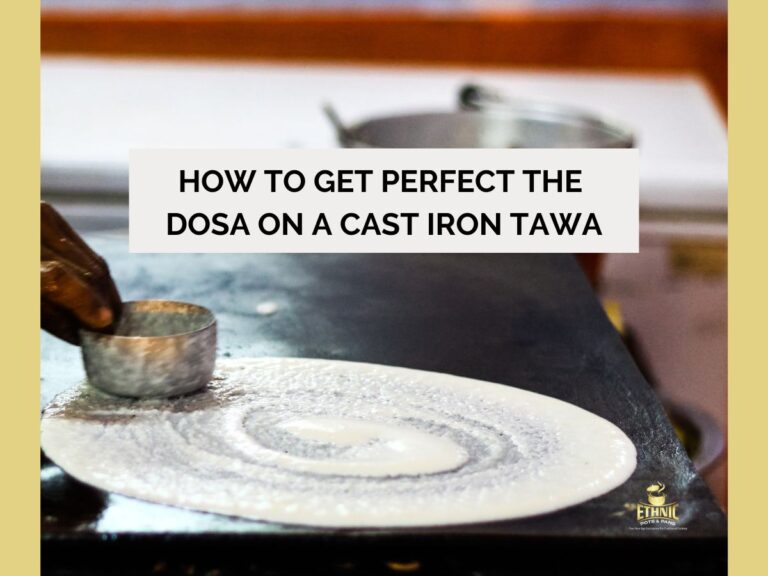Flatbreads are a staple in Indian households, and their preparation demands precision, attention to detail, and the right tools. The cast iron tawa is revered by cooks across the globe for its ability to evenly distribute heat, retain warmth, and develop the perfect texture for flatbreads. Unlike non-stick tawas, which may lose their coating over time, cast iron tawas only improve with use, becoming more seasoned and non-stick as the years go by.
A good tawa can make all the difference in how your flatbreads turn out, whether you are making soft and puffy rotis, crispy dosas, or layered parathas. In this guide, we will explore how to choose the right cast iron tawa based on material, size, shape, and other key factors. By the end, you’ll be equipped to make an informed decision, ensuring that your flatbreads come out perfect every time.
Why Choose Cast Iron for Making Indian Flatbreads?
Cast iron cookware has been used for centuries and continues to be a popular choice for many reasons. When it comes to making Indian flatbreads, the material of your tawa plays a crucial role in delivering the ideal texture and flavor.
– Heat Retention and Even Cooking: Cast iron tawas distribute heat evenly across their surface, ensuring that your flatbreads cook uniformly. This is essential for getting the desired soft, yet crisp texture that Indian flatbreads are known for. Additionally, cast iron retains heat for longer periods, allowing you to cook several batches of flatbreads efficiently.
– Non-Stick Properties: With proper seasoning, cast iron tawas develop a natural non-stick layer that enhances the cooking process. Unlike non-stick tawas, which use chemical coatings, the seasoning in cast iron tawas is a natural layer of oil baked onto the surface, making it ideal for cooking without harmful chemicals.
– Durability: Cast iron cookware is known for its longevity. When cared for properly, a cast iron tawa can last for decades and even become a family heirloom. Over time, the tawa becomes more seasoned and easier to cook with, making it a valuable addition to your kitchen.
– Flavor Development: Cooking on a cast iron tawa imparts a distinct flavor to flatbreads. The iron reacts with the food and contributes a slightly enhanced taste, which many cooks swear by when preparing traditional Indian dishes.
-
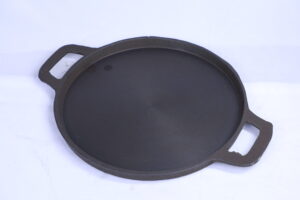
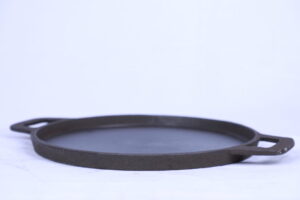
-
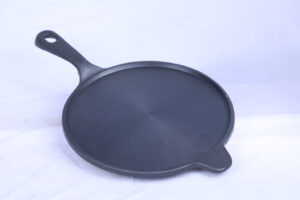
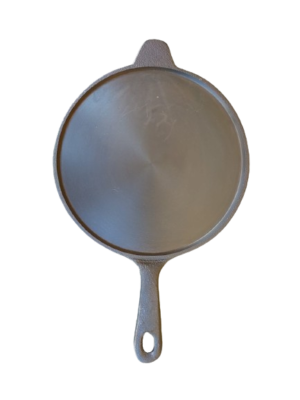 Pre-seasoned cast iron long handle dosa tawa₹1,100.00 – ₹1,250.00
Pre-seasoned cast iron long handle dosa tawa₹1,100.00 – ₹1,250.00 -
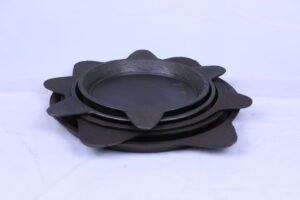
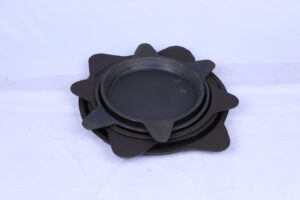 Pre-seasoned cast iron Edge raised tawa/Adai kal / Fish fry tawa₹1,050.00 – ₹1,150.00
Pre-seasoned cast iron Edge raised tawa/Adai kal / Fish fry tawa₹1,050.00 – ₹1,150.00 -
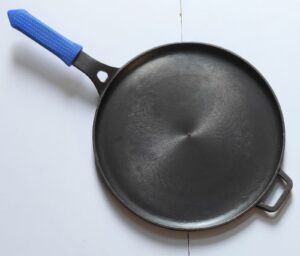
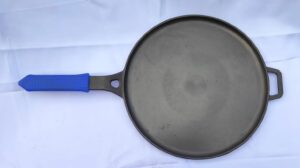
-
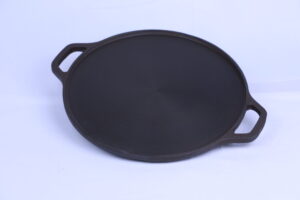
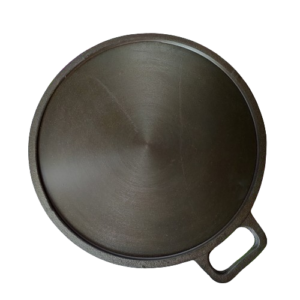 Pre-seasoned cast iron double handle dosa tawa₹850.00 – ₹1,050.00
Pre-seasoned cast iron double handle dosa tawa₹850.00 – ₹1,050.00 -
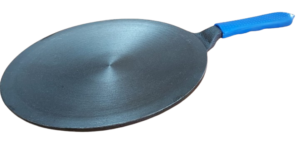
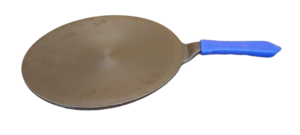
-
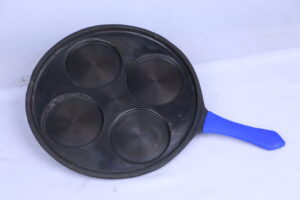
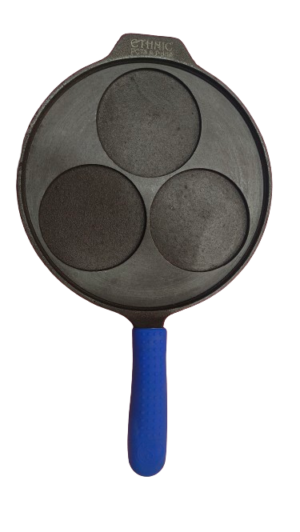 Pre-seasoned cast iron Mini oothapam/ pancake tawa₹1,050.00 – ₹1,150.00
Pre-seasoned cast iron Mini oothapam/ pancake tawa₹1,050.00 – ₹1,150.00 -
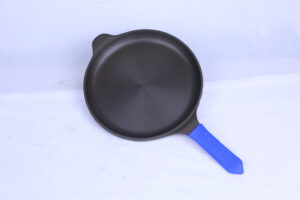
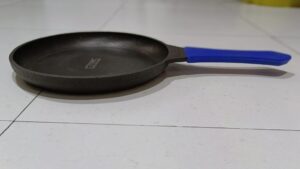 Pre-seasoned cast iron Omlette tawa/Roti Tawa with heat resistant grip₹800.00 – ₹1,000.00
Pre-seasoned cast iron Omlette tawa/Roti Tawa with heat resistant grip₹800.00 – ₹1,000.00 -
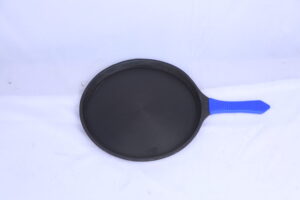 Pre-seasoned cast iron handle flat base tawa with heat resistant grip₹1,150.00 – ₹1,200.00
Pre-seasoned cast iron handle flat base tawa with heat resistant grip₹1,150.00 – ₹1,200.00
Key Factors to Consider When Choosing a Cast Iron Tawa
1. Size of the Tawa
The size of the cast iron tawa is one of the most important factors to consider. Depending on the type of flatbreads you plan to make, the size can affect your cooking process and the end result.
– Small Tawas (8-9 inches): These are ideal for cooking smaller portions or individual servings of flatbreads, such as rotis or chapatis. A smaller tawa heats up quickly and is easier to manage, making it perfect for single servings or small families.
– Medium Tawas (10-12 inches): Medium-sized tawas are the most versatile. They provide enough surface area to cook larger flatbreads like dosas, parathas, and even stuffed flatbreads without overcrowding. This size is recommended for families of four or more.
– Large Tawas (12-14 inches): If you regularly make large flatbreads or dosa, you may want to invest in a large tawa. These larger tawas offer ample space for spreading batter or preparing large quantities at once. They are often preferred by professionals or those who cook for large gatherings.
Choosing the right size depends on your specific cooking needs. For most households, a medium-sized tawa is the best all-around choice, providing versatility for different flatbreads.
Suggested Reading: Difference Between Cast Iron Cookware and Stainless Steel Cookware
2. Thickness and Weight
The thickness of a cast iron tawa impacts its ability to retain heat and cook flatbreads evenly. A thicker tawa will distribute heat more uniformly but can take longer to heat up. In contrast, a thinner tawa heats up faster but may cause uneven cooking.
– Thicker Tawas: Best for making dosa or parathas that require extended cooking times or lower heat. The thick base prevents burning and ensures the bread cooks thoroughly.
– Thinner Tawas: Ideal for quick-cooking breads like chapati or roti that require a rapid rise and cook on high heat for a short period.
Similarly, the weight of the tawa can affect ease of use. Heavier tawas retain heat better but may be more difficult to handle, while lighter tawas are easier to lift but may not distribute heat as effectively. It’s important to find a balance between thickness, weight, and heat retention to suit your cooking style.
3. Shape and Design
Tawas come in different shapes, with the most common being round or slightly concave. The shape of the tawa influences how the flatbread cooks and the ease with which you can maneuver it.
– Flat Tawas: These are great for making a wide variety of flatbreads, especially those that need an even surface, like chapatis, rotis, and parathas.
– Concave Tawas: A slight dip in the center helps to keep batter, such as dosa or cheela batter, from spreading too thinly. It also provides better control over the distribution of oil or ghee during cooking.
The design of the handle is another consideration. Cast iron tawas typically have a long handle for maneuvering and a small helper handle on the opposite side. Ensure that the handle is easy to grip and doesn’t get too hot during cooking.
Suggested Reading: How to get started and maintain a cast iron dosa tawa
4. Pre-Seasoned vs. Unseasoned
Cast iron tawas are available in both pre-seasoned and unseasoned varieties. Pre-seasoned tawas come ready for immediate use, with a layer of oil baked into the surface to create a natural non-stick coating. Unseasoned tawas, on the other hand, require you to season them at home before using.
– Pre-Seasoned Tawas: Convenient for beginners or those looking for an easy-to-use option. Pre-seasoned tawas reduce the hassle of initial seasoning and can be used right away.
– Unseasoned Tawas: Preferred by some traditional cooks who want to season the tawa themselves. Seasoning involves coating the tawa with oil and heating it to build up a protective, non-stick layer. While it requires more effort, it can also yield better long-term results.
For those new to cast iron, a pre-seasoned tawa is the best option for ease of use. However, if you prefer a more traditional approach and want to control the seasoning process, an unseasoned tawa can offer more flexibility.
Suggested Reading: Best New Year Gift Ideas for Cooking Enthusiasts
Maintenance and Care
Proper care is crucial for the longevity of a cast iron tawa. After cooking, clean the tawa with hot water and a soft brush. Avoid using harsh detergents or scrubbing pads, as they can remove the seasoning. Always dry the tawa thoroughly to prevent rust and apply a thin layer of oil before storing it.
A cast iron tawa is an essential tool for mastering the art of Indian flatbreads. Whether you’re preparing a soft roti, crispy dosa, or buttery paratha, a good tawa can make all the difference. By considering factors such as size, thickness, weight, and surface type, you can choose a cast iron tawa that meets your cooking needs. With proper care and maintenance, your tawa will last for years, improving with each use and helping you perfect the art of Indian flatbreads.
